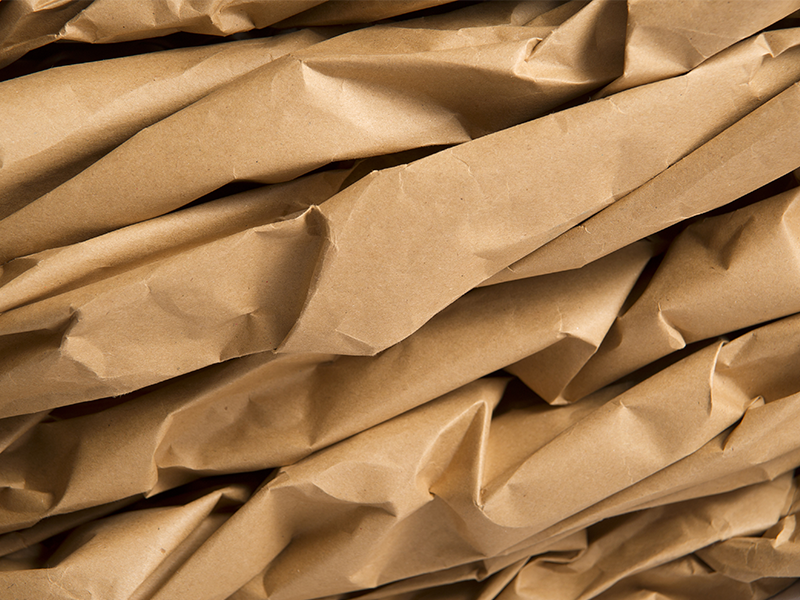Design with Natural Monomaterials to Unlock Circularity Sooner
Moving towards a more circular economy is essential for the future of our planet, but it can be hard to know where to start. One great way to get going is by designing products with natural monomaterials, which could unlock circularity so much quicker. Let’s take a look at why this approach works and how designers can make it happen.
What are Natural Monomaterials?
Natural monomaterials are materials that are extracted from nature and remain in their purest form without modification or blending with other materials. They come from renewable sources like plants, trees, and animals and include materials like wood, leather, jute fiber, bamboo fiber, wool, cork, silk. These materials are biodegradable when they reach the end of their life cycle and don’t require any additional chemicals or energy-intensive processes to break them down into their most basic elements before they can be recycled or reused.
Why Use Natural Monomaterials?
Designing with natural monomaterials makes it easier to create products that have a reduced environmental impact throughout their entire life cycle. By using just one material rather than multiple ones that need to be separated before they can be recycled or reused at the end of their lives, you’re making your product more easily recyclable. It also reduces the amount of energy that goes into manufacturing as you don’t need additional processes or chemicals for breaking down different materials during production. And because these materials come from renewable sources like plants and animals rather than synthetic ones derived from fossil fuels, you’re reducing your carbon footprint too!
How Can Designers Make it Happen?
The key is to think outside the box when designing your products! Consider what kind of natural monomaterial would work best for each component of your product—wood for furniture frames, cork for insulation panels, wool for upholstery fabrics—and look into alternatives like plant-based plastics for those components that don’t lend themselves well to natural monomaterials. Working closely with suppliers is also important so you can ensure that all the materials used in production are actually sustainable and come from renewable sources. Lastly, remember to always keep in mind how your product will be disposed of at the end of its life—will it be broken down into its most basic elements so it can be recycled or reused? If not, then you may need to consider an alternative design solution!
Using natural monomaterials in product design is an easy way to move towards a more circular economy and reduce our environmental footprint while doing so. Not only does this approach make products easier to recycle or reuse at the end of their lives but also reduces energy consumption during manufacturing too! Designers should take advantage of this approach by looking outside the box when creating their designs and working closely with suppliers who use sustainable materials sourced from renewable sources whenever possible. Doing this will help us unlock circularity much sooner so we can enjoy a healthier planet together!
What are Natural Monomaterials?
Natural monomaterials are materials that are extracted from nature and remain in their purest form without modification or blending with other materials. They come from renewable sources like plants, trees, and animals and include materials like wood, leather, jute fiber, bamboo fiber, wool, cork, silk. These materials are biodegradable when they reach the end of their life cycle and don’t require any additional chemicals or energy-intensive processes to break them down into their most basic elements before they can be recycled or reused.
Why Use Natural Monomaterials?
Designing with natural monomaterials makes it easier to create products that have a reduced environmental impact throughout their entire life cycle. By using just one material rather than multiple ones that need to be separated before they can be recycled or reused at the end of their lives, you’re making your product more easily recyclable. It also reduces the amount of energy that goes into manufacturing as you don’t need additional processes or chemicals for breaking down different materials during production. And because these materials come from renewable sources like plants and animals rather than synthetic ones derived from fossil fuels, you’re reducing your carbon footprint too!
How Can Designers Make it Happen?
The key is to think outside the box when designing your products! Consider what kind of natural monomaterial would work best for each component of your product—wood for furniture frames, cork for insulation panels, wool for upholstery fabrics—and look into alternatives like plant-based plastics for those components that don’t lend themselves well to natural monomaterials. Working closely with suppliers is also important so you can ensure that all the materials used in production are actually sustainable and come from renewable sources. Lastly, remember to always keep in mind how your product will be disposed of at the end of its life—will it be broken down into its most basic elements so it can be recycled or reused? If not, then you may need to consider an alternative design solution!
Using natural monomaterials in product design is an easy way to move towards a more circular economy and reduce our environmental footprint while doing so. Not only does this approach make products easier to recycle or reuse at the end of their lives but also reduces energy consumption during manufacturing too! Designers should take advantage of this approach by looking outside the box when creating their designs and working closely with suppliers who use sustainable materials sourced from renewable sources whenever possible. Doing this will help us unlock circularity much sooner so we can enjoy a healthier planet together!





Leave a comment